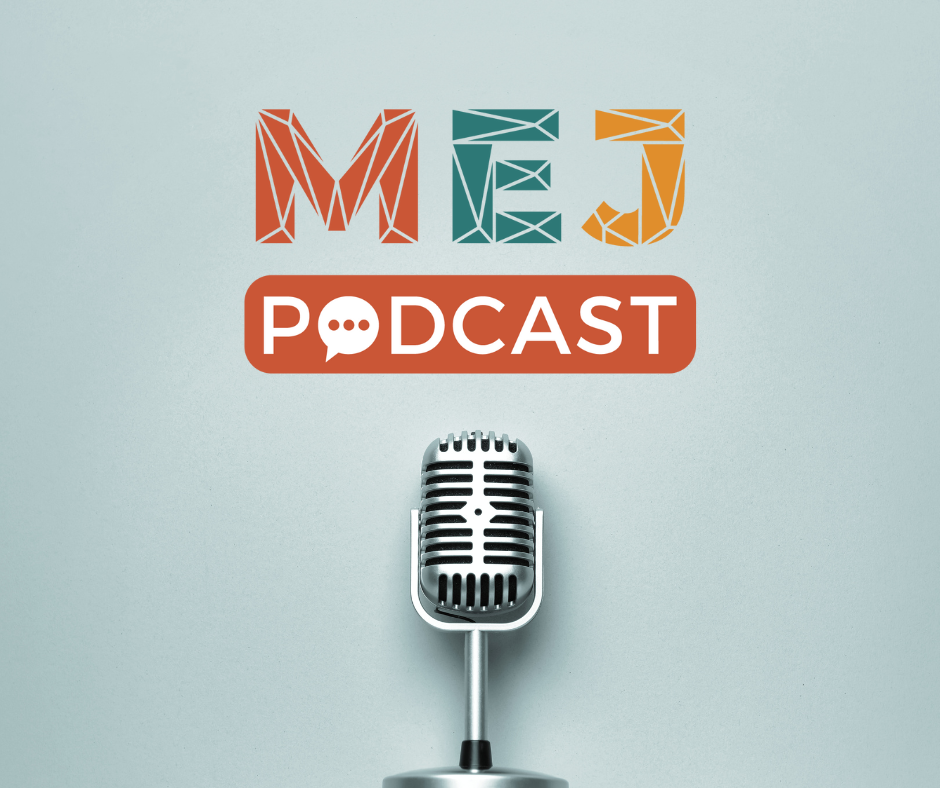Cikkismertetés: A rasszizmussal, a szexizmussal, a heteroszexizmussal és a nemi binarizmussal kapcsolatos mérések az egészségméltányosság kutatásában – A strukturális igazságtalanságtól a beépült ártalomig – ökoszociális elemzés (fordítás)
Absztrakt
Rasszizmus. Szexizmus. Heteroszexizmus. Nemi binarizmus. Ezek együttesen az egészség-méltánytalanságok beépülését strukturáló öncélú hatalom és kiváltságok igen ártalmas, elkülönülő és összefonódó társadalmi rendszereit alkotják. A betegségek eloszlásának ökoszociális elmélete alapján szintetizálom a kiválasztott "izmusok" fő jellemzőit, és a globális északi és a globális déli országok kutatásai alapján mérési sémát is adok. A tárgyalt mérőszámok között szerepelnek (a) strukturális mérőszámok, beleértve az explicit szabályokat és törvényeket, az implicit szabályokat és törvényeket, valamint a területi vagy intézményi, nem szabályozási intézkedéseket; és (b) egyéni szintű (kitettségi és internalizált) mérőszámokat, beleértve az explicit önbevalláson alapuló, kinyilvánított, rejtett és kísérleti mutatókat. Az ajánlások közé tartozik (a) a strukturális hatások mérésének kiterjesztése, hogy azok túlmutassanak a pszicho-szociális, egyéni szintű mérések jelenlegi elsődleges használatán; (b) a kitettség elemzése mind az életút, mind a korábbi generációk vonatkozásában; (c) az „anti-izmusok” mérésének kidolgozása; és (d) olyan területi alapú mérések kidolgozása, amelyek feltárhatják az igazságtalan „izmusok” strukturális meghatározói közötti kapcsolatokat, valamint azok környezetromlásra, éghajlat változásra és egészség-méltánytalanságokra gyakorolt hatásait.
Hivatkozások
Krieger N. (2020). Measures of Racism, Sexism, Heterosexism, and Gender Binarism for Health Equity Research: From Structural Injustice to Embodied Harm-An Ecosocial Analysis. Annual review of public health, 41, 37–62. doi: https://doi.org/10.1146/annurev-publhealth-040119-094017
Alexander M. 2010. The New Jim Crow: Mass Incarceration in the Age of Colorblindness. New York: New Press
Almond DV, Chay KY, Greenstone M. 2006. Civil rights, the War on Poverty, and black-white convergence in infant mortality in the rural South and Mississippi.Work. Pap. 07–04, Dep. Econ., Mass. Inst. Technol., Cam-bridge. http://papers.ssrn.com/sol3/papers.cfm?abstract_id=961021
Altman A. 2016. Discrimination. In The Stanford Encyclopedia of Philosophy, ed. EN Zalta. Stanford, CA: Me-taphys. Res. Lab, Stanford Univ. Winter ed. https://plato.stanford.edu/archives/win2016/entries/discrimination/
Anderson C. 2018. One Person, No Vote: How Voter Suppression Is Destroying Our Democracy. New York: Blo-omsbury
Arístegui I,Radusky PD, Zalazar V, Romero M, Schwartz J, Sued O. 2017. Impact of the gender identity law in Argentinean transgender women. Int. J. Transgend. 18(4):446–56
Armstead CA, Lawler KA,Gorden G, Cross J, Gibbons J. 1989. Relationship of racial stressors to blood pressure responses and anger expression in black college students. Health Psychol. 8:541–56
Austin KF, Noble MD, Mejia MT. 2014. Gendered vulnerabilities to a neglected disease: a comparative investiga-tion of the effect of women’s legal economic rights and social status on malaria rates. Int. J. Comp. Sociol. 55(3):204–28
Bailey ZD, Krieger N, Agénor M, Graves J, Linos N, Bassett M. 2017. Structural racism and health inequities in the USA: evidence and interventions. Lancet 389:1453–63
Baldwin AM, Dodge B, Schick V, Sanders SA, Fortenberry JD. 2017. Sexual minority women’s satisfaction with health care providers and state-level structural support: investigating the impact of lesbian, gay, bisexual and transgender nondiscrimination legislation. Women’s Health Issues 27(3):271–78
Banaji MR, Greenwald AG. 2013. Blindspot: Hidden Biases of Good People. New York: Delacourt
Barkan S. 2018. Measuring perceived mistreatment: potential problems in asking about “discrimination.” Sociol. Inq. 88(2):245–53
Bastos JL, Celeste RK, Faerstein E, Barros AJD. 2010. Racial discrimination and health: a systematic review of scales with a focus on their psychometric properties. Soc. Sci. Med. 70(7):1091–99
Beckfield J. 2018. Political Sociology and the People’s Health. New York: Oxford Univ. Press
Beckfield J, Krieger N. 2009. Epi + demos + cracy: linking political systems and priorities to the magnitude of health inequities—evidence, gaps, and a research agenda. Epidemiol. Rev. 31(1):152–77
Beckfield J, Morris KA, Bambra C. 2018. How social policy contributes to the distribution of population health: the case of gender health equity. Scand. J. Public Health 46:6–17
Bell K. 2016. Bread and roses: a gender perspective on environmental justice and public health. Int. J. Environ. Res. Public Health 13(10):1005
Berkman LF, Kawachi I, Glymour M, eds. 2014. Social Epidemiology. New York: Oxford Univ. Press. 2nd ed.
Bethlehem J. 2010. Selection bias in web surveys. Int. Stat. Rev. 78:161–88
Beyrer C. 2014. Pushback: the current wave of anti-homosexuality laws and impacts on health. PLOS Med. 11(6):e1001658
Bhandari A, Burroway R. 2018. Hungry for equality: a longitudinal analysis of women’s legal rights and food security in developing countries. Sociol. Q. 59(3):424–48
Birn A-E, Pillay Y, Holtz TH. 2017. Textbook of Global Health. New York: Oxford Univ. Press
Blair IV, Brondolo E. 2017. Moving beyond the individual: community-level prejudice and health. Soc. Sci. Med. 183:169–72
Blinder A, Burch ADS. 2019. Fate of Confederate monuments is stalled by competing legal battles. New York Times, Jan. 20. https://www.nytimes.com/2019/01/20/us/confederate-monumentslegal-battles.html
Bonifacio GT, ed. 2018. Global Currents in Gender and Feminisms: Canadian and International Perspectives. Bingley, UK: Emerald
Bosse JD, Chiodo L. 2016. It is complicated: gender and sexual orientation in LGBTQ youth. J. Clin. Nurs. 25:3665–75
Braveman P, Gruskin S. 2003. Defining equity in health. J. Epidemiol. Community Health 57:254–58
Brown TN. 2001. Measuring self-perceived racial and ethnic discrimination in social surveys. Sociol. Spectr. 21(3):377–92
Buchanan NT, Settles IH, Wu IHC, Hayashino DS. 2018. Sexual harassment, racial harassment, and well-being among Asian American women: an intersectional approach. Women Therapy 41(3–4/S1):261–80
Burks AC, Cramer RJ, Henderson CE, Stroud CH, Crosby JW, Graham J. 2018. Frequency, nature and correlates of hate crime victimization experiences in an urban sample of lesbian, gay, and bisexual community mem-bers. J. Interpers. Violence 33(3):402–20
Cadwalladr C. 2018. Our Cambridge Analytica scoop shocked the world. But the whole truth remains elusive. The Guardian, Dec. 23. https://www.theguardian.com/uk-news/2018/dec/23/cambridgeanalytica-facebook-scoop-carole-cadwalladr-shocked-world-truth-still-elusive
Campos-Serna J, Ronda-Pérez E, Artacoz L, Moen BE, Benavides FG. 2013. Gender inequalities in occupational health related to the unequal distribution of working and employment conditions: a systematic review. Int. J. Equity Health 12:57
Carliner H, Sarvet AL, Gordon AR, Hasin DR. 2017. Gender discrimination, educational attainment, and drug use among U.S. women. Soc. Psychol. Psychiatr. Epi. 52(3):279–89
Carney DR, Banaji MR, Krieger N. 2010. Implicit measures reveal evidence of personal discrimination. Self Iden-tity 9(2):162–76 54
Carroll A, Mendos LR. 2017. State sponsored homophobia 2017: a world survey of sexual orientation laws: crimi-nalization, protection, and recognition. Rep., Int. Lesbian, Gay, Bisex., Trans Intersex Assoc. (IL-GA),Geneva. https://ilga.org/sites/default/files/ILGA_State_Sponsored_Homophobia_2017_WEB.pdf
Caughey D,Warshaw C. 2016. The dynamics of state policy liberalism: 1936–2014. Am. J. Political Sci. 60(4):899–913
Chae DH, Clouston S,Martz CD,Hatzenbuehler ML, Cooper HLF, et al. 2018. Area racism and birth outcomes among blacks in the United States. Soc. Sci. Med. 199(SI):49–55
Chae DH, Lincoln KD, Adler NE, Syme SL. 2010. Do experiences of racial discrimination predict cardiovascular disease among African American men? The moderating role of internalized negative racial group attitudes. Soc. Sci. Med. 71(6):1182–88
Chae DH, Powell WA, Nuru-Jeter AM, Smith-Bynum MA, Seaton EK, et al. 2017. The role of racial identity and implicit racial bias in self-reported racial discrimination: implications for depression among African Ameri-can men. J. Black Psychol. 43:789–812
Chambers BD, Erausquin JT, Tanner AE, Nichols TR, Brown-Jeffy S. 2018. Testing the association between tradi-tional and novel indicators of county-level structural racism and birth outcomes among black and white women. J. Racial Ethn. Disparities 5(5):966–77
Chan DK-S, Lam CB,Chow SY, Cheung SF. 2008. Examining the job-related, psychological, and physical out-comes of workplace sexual harassment: a meta-analytic review. Psychol. Women’s Q. 32(4):362–76
Choi KH,Bowleg L,Neilands TB. 2011.The effects of sexism, psychological distress, and difficult sexual situati-ons on U.S. women’s sexual risk behaviors. AIDS Educ. Prev. 23:397–411
Chodzen G, HidalgoMA, Chen D, Garofalo R. 2019. Minority stress factors associated with depression and anxie-ty among transgender and gender-nonconforming youth. J. Adolesc. Health 64(4):467–71
Coburn J. 2017. Concepts for studying urban environmental justice. Curr. Env. Health Rep. 4(1):61–67
Correll J, Judd CM, Park B,Wittenbrink B. 2010. Measuring prejudice, stereotypes, and discrimination. In The SAGEHandbook of Prejudice, Stereotyping and Discrimination, ed. JF Dovidio,MHewstone,PGlick, VM Esses, pp. 45–62. Thousand Oaks, CA: Sage
Daoud N, Gao M, Osman A, Muntaner C. 2018. Interpersonal and institutional ethnic discrimination and mental health in a random sample of Palestinian minority men smokers in Israel. Soc. Psychiatry Psychiatr. Epi-demi-ol. 53(10):1111–22
de Freitas DF, Fernandes-Jesus M, Ferreira PD, Coimbra S, Teixeira PM, et al. 2018. Psychological correlates of perceived ethnic discrimination in Europe: a meta-analysis. Psychol. Violence 8(6/SI):712–25
Diehl A, Vieira DL, Zaneti MM, Fanganiello A, Sharan P, et al. 2017. Social stigma, legal and public health barri-ers faced by the third gender phenomenon in Brazil, India, andMexico: travesties, hijras and muxes. Int. J. Soc. Psychiatry 63(5):389–99
Dinh H, Strazdins L, Welsh J. 2017. Hour-glass ceilings: work-hour thresholds, gendered health inequities. Soc. Sci. Med. 176:42–51
Doyal L, Gough I. 1991. A Theory of Human Need. Basingstoke, UK: MacMillan
Du Bois SN, Yoder W, Guy AA, Manser K, Ramos S. 2018. Examining associations between state-level transgen-der policies and transgender health. Transgend. Health 3(1):220–24
Eliezer D, Major B, Mendes WB. 2010. The costs of caring: Gender identification increases threat following ex-posure to sexism. J. Exp. Soc. Psychol. 46(1):159–65
English D, Bowleg L, del Río-González AM, Tschann JM, Agans R, Malebranche DJ. 2017. Measuring black men’s police-based discrimination experiences: development and validation of the Police and Law Enforce-ment (PLE) scale. Cult. Divers. Ethn. Minor. Psychol. 23(2):185–99
Espey E, Dennis A,Landy U. 2019.The importance of access to comprehensive reproductive health care, inc-luding abortion: a statement from women’s health professional organizations. Am. J. Obstet. Gynecol. 220(1):67–70
Fausto-Sterling A. 2012. Sex/Gender: Biology in a Social World. New York: Routledge
FHA (Fed. Housing Adm.). 1934. Underwriting Manual: Underwriting and Valuation Procedure Under Title II of the National Housing Act.Washington, DC: Fed. Hous. Adm.
Frederickson GM. 2002. Racism: A Short History. Princeton, NJ: Princeton Univ. Press
Friel S. 2019. Climate Change and the People’s Health. New York: Oxford
Gee GC, Ford CL. 2011. Structural racism and health inequities: old issues, new directions. Du Bois Rev. 8(1):115–32
Gezinski LB. 2012. The global gag rule: impacts of conservative ideology on women’s health. Int. Soc. Work 55(6):837–49
Gianattasio KZ,Wu Q, Glymour MM, Power MC. 2019. Comparison of methods for algorithmic classification of dementia status in the Health and Retirement Study. Epidemiol. 30:291–302
Gilbert SF, Epel D. 2015. Ecological Developmental Biology: The Environmental Regulation of Development, Health, and Evolution. Sunderland, MA: Sinauer Assoc.
Gold RB, Starrs AM. 2017. US reproductive health and rights: beyond the global gag rule. Lancet Public Health 2(3):e122–23
Goodman SN, Goel S, Cullen MR. 2018. Machine learning, health disparities, and causal reasoning (editorial). Ann. Int. Med. 169:883–84
Greenwald AG, Poehlman TA, Uhlmann EL, Banaji MR. 2009. Understanding and using the implicit association test: III. Meta-analysis of predictive validity. J. Pers. Soc. Psychol. 97:17–41
Grene M. 1975. People and other animals. In The Understanding of Nature: Essays in the Philosophy of Biology, ed.M Grene, pp. 346–60. Dordrecht, Neth.: D. Reidel
Grodin MA,Tarantola D, Annas GJ, Gruskin S, eds. 2013. Health and Human Rights in a ChangingWorld. New York: Routledge. 3rd ed.
Grusky DB, Hill J, eds. 2018. Inequality in the 21st Century. Boulder, CO: Westview
Guillaume A, Rossier C. 2018. Abortion around the world: an overview of legislation, measures, trends, and consequences, transl. P Reeve. Population 73:271–306
Haberle M, Kumiawan H, eds. 2018. Strategies for health justice: lessons from the field. Field Rep., Poverty Race Res. Action Counc. (PPRAC), Washington, DC. https://prrac.org/strategies-forhealth-justice-lessons-from-the-field/
Hahn RA, Truman BI, Williams DR. 2018. Civil rights as determinants of public health and racial and ethnic he-alth equity: health care, education, employment, and housing in the United States. Soc. Sci. Med. Popul. He-alth 4:17–24
Harnois CE, Bastos JL. 2018. Discrimination, harassment, and gendered health inequities: Do perceptions of workplace mistreatment contribute to the gender gap in self-reported health? J. Health Soc. Behav. 59(2):283–99
Harris RB, Stanley J, Cormack DM. 2018. Racism and health in New Zealand: prevalence over time and asso-cia-tions between recent experience of racism and health and wellbeing measures using national survey data. PLOS ONE 13(5):e0196476
Hatzenbuehler ML, McLaughlin KA,Keyes KM,Hasin DS. 2010. The impact of institutional discrimination on psy-chiatric disorders in lesbian, gay, and bisexual populations: a prospective study.Am. J. Public Health 100(3):452–59
Hill Collins P, Bilge S. 2016. Intersectionality. Cambridge, UK: Polity Press
Hinton EK. 2016. From the War on Poverty to The War on Crime: The Making of Mass Incarceration in America. Cambridge, MA: Harvard Univ. Press
Hoggard LS, Hill LK,Gray DL, Sellers RM.2015. Capturing the cardiac effects of racial discrimination: Do the ef-fects “keep going”? Int. J. Psychophysiol. 97:163–70
Homan P. 2019. Structural sexism and health in the United States: a new perspective on health inequality and the gender system. Am. Sociol. Rev. 84(3):486–516
Huynh VH, Hunyh Q-L, Stein M-P. 2017. Not just sticks and stones: indirect ethnic discrimination leads to greater physiological reactivity. Cult. Divers. Ethn. Minor. Psychol. 23(3):425–34
Jacoby SF, Dong B, Beard JH, Wiebe DJ, Morrison CN. 2018. The enduring impact of historical and structural racism on urban violence in Philadelphia. Soc. Sci. Med. 199:87–95
Jäggi T, Jellestad L, Corbisiero S, Schaefer DJ, Jenewein J, et al. 2018. Gender minority stress and depressive symptoms in transitioned Swiss transpersons. Biomed. Res. Int. 2018:8639263
Jane EA. 2017. Misogyny Online: A Short (And Brutish) History. London: SAGE 56
Kabel C. 2017. Health, equity and the narrative of place: commentary. NAM Perspect. Nov. 27. https://nam.edu/health-equity-and-the-narrative-of-place
Kaplan GR,Ranjit N,Burgard SA. 2008. Lifting gates, lengthening lives: Did civil rights policies improve the he-alth of African American women in the 1960s and 1970s? In Making Americans Healthier: Social and Eco-nomic Policy as Health Policy, ed. RF Schoeni, JS House, G Kaplan, H Pollack, pp. 145–70. New York: Russell Sage Found.
Khubchandani J, Soni A, Fahey N, Raithatha N, Prabhakaran A, et al. 2018. Caste matters: perceived discrimi-na-tion among women in rural India. Arch. Women’s Ment. Health 21(2):163–70
Kim M. 2015. Pay secrecy and the gender wage gap. Ind. Relat. 54(4):648–67
Kimmel G. 2017. The Gendered Society. New York: Oxford Univ. Press. 6th ed.
Klein N. 2014. This Changes Everything: Capitalism versus the Climate. New York: Simon & Schuster
Kramar DE, Anderson A, Hilfer H, Branden K, Gutrich JJ. 2018. A spatially informed analysis of environmental justice: analyzing the effects of gerrymandering and the proximity of minority populations to U.S. superfund sites. Environ. Justice 11(1):29–39
Kressin NR, Raymond KL, Manze M. 2008. Perceptions of race/ethnicity-based discrimination: a review of measures and evaluation of their usefulness for the health care setting. J. Health Care Poor Underserved 19(3):697–730
Krieger N. 1987. Shades of difference: theoretical underpinnings of the medical controversy on black/white differences in the United States, 1830–1870. Int. J. Health Serv. 17(2):259–78
Krieger N. 1994. Epidemiology and the web of causation: Has anyone seen the spider? Soc. Sci. Med. 39(7):887–903
Krieger N. 1999. Embodying inequality: a review of concepts, measures, and methods for studying health con-sequences of discrimination. Int. J. Health Services 29:295–352. Repr., 2000. Discrimination and health. In Social Epidemiology, ed. L Berkman, I Kawachi, pp. 36–75. New York: Oxford Univ. Press
Krieger N. 2001. Theories for social epidemiology in the 21st century: an ecosocial perspective. Int. J. Epidemiol. 30(4):668–77
Krieger N. 2003. Genders, sexes, and health: What are the connections—and why does it matter? Int. J. Epide-miol. 32:652–57
Krieger N. 2005. Embodiment: a conceptual glossary for epidemiology. J. Epidemiol. Community Health 59(5):350–55
Krieger N. 2008. Proximal, distal, and the politics of causation: What’s level got to do with it? Am. J. Public Health 98:221–30
Krieger N. 2011. Epidemiology and the People’s Health: Theory and Context. New York: Oxford Univ. Press
Krieger N. 2012. Methods for the scientific study of discrimination and health: an ecosocial approach. Am. J. Public Health 102:936–44
KriegerN. 2014. Discrimination and health inequities. See Ref. 17, pp. 63–125. Repr., 2014. Int. J. Health Servi-ces 44:643–710
Krieger N, Carney D, Lancaster K, Waterman PD, Kosheleva A, Banaji M. 2010. Combining explicit and implicit measures of racial discrimination in health research. Am. J. Public Health 100(8):1485–92
Krieger N, Chen JT, Coull B, Waterman PD, Beckfield J. 2013. The unique impact of abolition of Jim Crow laws on reducing inequities in infant death rates and implications for choice of comparison groups in analyzing societal determinants of health. Am. J. Public Health 103(12):2234–44
Krieger N, Chen JT, Coull BA, Beckfield J, Kiang MV, Waterman PD. 2014. Jim Crow and premature mortality among the US black and white population, 1960–2009: an age-period-cohort analysis. Epidemiology 25(4):494–504
Krieger N, Chen JT, Waterman PD, Hartman C, Stoddard AM, et al. 2008. The inverse hazard law: blood pres-su-re, sexual harassment, racial discrimination, workplace abuse and occupational exposures in US low-income black, white, and Latino workers. Soc. Sci. Med. 67(12):1970–81
Krieger N, Chen JT, Waterman PD, Kosheleva A, Beckfield S. 2013. History, haldanes, and health inequities: exploring phenotypic changes in body size by generation and income level in the US-born white and black non-Hispanic populations, 1959–1962 to 2005–2008. Int. J. Epidemiol. 42:281–95
Krieger N, Davey SmithG. 2016.The tale wagged by theDAG: broadening the scope of causal inference and explanation for epidemiology. Int. J. Epidemiol. 45:1787–808
Krieger N, Jahn JL, Waterman PD. 2017. Jim Crow and estrogen-receptor-negative breast cancer: USborn black and white non-Hispanic women, 1992–2012. Cancer Causes Control 28:49–59
Krieger N, Jahn JL, Waterman PD, Chen JT. 2018. Breast cancer estrogen receptor status according to biolo-gi-cal generation: US black and white women born 1915–1979. Am. J. Epidemiol. 187:960–70
Krieger N, Kim R, Feldman J, Waterman PD. 2018. Using the Index of Concentration at the Extremes at multi-ple geographic levels tomonitor health inequities in an era of growing spatial social polarization: Massachu-setts, USA (2010–2014). Int. J. Epidemiol. 47(3):788–819
Krieger N, Rowley DL, Herman AA, Avery B, Phillips MT. 1993. Racism, sexism, and social class: implications for studies of health, disease, and well-being. Am. J. Prev. Med. 9(Suppl.):82–122
KriegerN, Sidney S. 1996. Racial discrimination and blood pressure: the CARDIA study of young black and white adults. Am. J. Public Health 86(10):1370–78
Krieger N, Smith K, Naishadham D, Hartman C, Barbeau EM. 2005. Experiences of discrimination: validity and reliability of a self-report measure for population health research on racism and health. Soc. Sci. Med. 61(7):1576–96
Krieger N, Waterman PD, Gryparis A, Coull BA. 2015. Black carbon exposure, socioeconomic and racial/ethnic spatial polarization, and the Index of Concentration at the Extremes (ICE). Health Place 34:215–28
Krieger N, Waterman PD, Kosheleva A, Chen JT, Carney DR, et al. 2011. Exposing racial discrimination: implicit & explicit measures—the My Body, My Story study of 1005 US-born black & white community health center members. PLOS ONE 6(11):e27636
Krieger N, Waterman PD, Kosheleva A, Chen JT, Smith KS, et al. 2013. Racial discrimination & cardiovascular disease risk: My Body My Story study of 1005 US-born black and white community health center partici-pants (US). PLOS ONE 8(10):e77174
Krieger N, Waterman PD, Spasojevic J, LiW, Maduro G, VanWye G. 2016. Public health monitoring of privilege and deprivation with the Index of Concentration at the Extremes (ICE). Am. J. Public Health 106(2):256–63
Kubzansky LD, Seeman TE, Glymour MM. 2014. Biological pathways linking social conditions and health: plausi-ble mechanisms and emerging puzzles. See Ref. 17, pp. 512–61
Latour B. 2018. Down to Earth: Politics in the New Climatic Regime. Cambridge,UK/Medford, MA: Polity. Engl. Ed.
Lauster N, Easterbrook A. 2011. No room for new families? A field experiment measuring rental discrimination against same-sex couples and single parents. Soc. Probl. 58(3):389–409
Lepore SJ, Revenson TA, Weinberger SL, Weston P, Frisina PG, et al. 2006. Effects of social stressors on car-dio-vascular reactivity among black and white women. Ann. Behav. Med. 31(2):120–27
Levin S. 2019. Oracle systematically underpaid thousands of women, lawsuit says. The Guardian, Jan. 18. https://www.theguardian.com/technology/2019/jan/18/oracle-women-workers-lawsuitsalaries-pay
Lewis TT, Cogburn CD, Williams DR. 2015. Self-reported experiences of discrimination and health: scientific advances, ongoing controversies, and emerging issues. Annu. Rev. Clin. Psychol. 11:407–40
Liebler CA, Porter SR, Fernandez LE, Noon JM, Ennis SR. 2017. America’s churning races: race and ethnic res-ponse changes between Census 2000 and the 2010 Census. Demography 54(1):259–84
Liptak A. 2019. Supreme Court revives transgender ban for military service. New York Times, Jan. 22. https://www.nytimes.com/2019/01/22/us/politics/transgender-ban-military-supremecourt.html
Lipton P. 2004. Inference to the Best Explanation. London: Routledge/Taylor and Francis Group. 2nd ed.
Lukachko A, Hatzenbuhler ML, Keyes KM. 2014. Structural racism and myocardial infarction in the United States. Soc. Sci. Med. 103(SI1):42–50
Macmillan R, Shofia N, SigleW. 2018. Gender and the politics of death: female representation, political and developmental context, and population health in a cross-national panel. Demography 55(5):1905–34 58
MacPhee J, ed. 2010. Celebrate People’s History: The Poster Book of Resistance and Revolution. New York: Fem. Press, City Univ. N. Y.
Major B, Dovidio JF, Link BG, eds. 2017. The Oxford Handbook of Stigma, Discrimination, and Health. New York: Oxford Univ. Press
Marshall BD, Socías ME, Kerr T, Zalazar V, Sued O, Arístegui I. 2016. Prevalence and correlates of lifetime su-icide attempts among transgender persons in Argentina. J. Homosex. 63(7):955–67
McClure E, Feinstein L, Cordoba E, Douglas C, Emch M, et al. 2019. The legacy of redlining in the effect of fore-closure on Detroit residents’ self-rated health. Health Place 55:9–19
Mereish EH, Katz-Wise SL, Woulfe J. 2017. Bisexual-specific minority stressors, psychological distress, and suicidality in bisexual individuals: the mediating role of loneliness. Prev. Sci. 18(6/S1):716–25
Mereish HE, Poteat VP. 2015. A relational model of sexual minority mental and physical health: the negative effects of shame on relationships, loneliness, and health. J. Couns. Psychol. 62(3):425–37
Merry SE. 2016. The Seductions of Quantification: Measuring Human Rights, Gender Violence, and Sex Traf-ficking. Chicago: Univ. Chicago Press
Mesic A, Franklin L, Cansever A, Potter F, Sharma A, et al. 2018. The relationship between structural racism and black-white disparities in fatal police shootings at the state level. J. Natl. Med. Assoc. 110(2):106–16
Metzger MW, Webber JS, eds. 2019. Facing Segregation: Housing Policy Solutions for a Stronger Society. New York: Oxford Univ. Press
Milevska S, ed. 2016. On Productive Shame, Reconciliation, and Agency. Berlin: Sternberg
Miller CT, Varni SE, Solomon SE, DeSarno MJ, Bunn JY. 2016. Macro-level implicit HIV prejudice and the health of community residents with HIV. Health Psychol. 35(8):807–15
Miller G. 2008. Women’s suffrage, political responsiveness, and child survival in American history. Q. J. Econ. 123:1287–327
Molix L. 2014. Sex differences in cardiovascular health: Does sexism influence women’s health? Am.J. Med. Sci. 348(2):153–55
Moore LD, Elkavich A. 2008. Who’s using and who’s doing time: incarceration, the war on drugs, and public health. Am. J. Public Health 98(5):782–86
MorrisonMA, Bishop CJ, Morrison TG. 2018. What is the best measure of discrimination against trans people?: A systematic review of the psychometric literature. Psychol. Sex. 9(3):269–87
Morrison TG, Bishop CJ, Morrison MA, Parker-Taneo K. 2016. A psychometric review of measures assessing discrimination against sexual minorities. J. Homosex. 63(8):1086–126
Mouzon DM, McLean JS. 2017. Internalized racism and mental health among African-Americans, USborn Car-ibbean Blacks, and foreign-born Caribbean blacks. Ethn. Health. 22:36–48
Nadler JT, Lowery MR, eds. 2018. The War on Women in the United States: Beliefs, Tactics, and the Best De-fense. Santa Barbara, CA: Praeger
Natl. Res. Counc. 2004. Measuring RacialDiscrimination, ed. RMBlank,R Babady,CF Citro.Washington, DC: National Acad. Press
Nosek BA, Hawkins CB, Frazier RS. 2011. Implicit social cognition: from measures to mechanisms. Trends Cogn. Sci. 15:152–59
NPR/Harvard T. H. Chan Sch. Public Health/Robert Wood Johnson Found. 2017. Discrimination in America. Race, Racism, and Health. https://www.rwjf.org/en/library/research/2017/10/discrimination-in-america--experiences-and-views.html
O’Neil C. 2016.Weapons of Math Destruction: How Big Data Increases Inequality and Threatens Democracy. New York: Crown
O’Neil A, Sojo V, Fileborn B, Scovelle AJ, Milner AJ. 2018. The #MeToo movement: an opportunity in public health? Lancet 391(10140):2587–859
Okechukwu CA, Souza K, David KD, de Castro AB. 2014. Discrimination, harassment, abuse, and bullying in the workplace: contribution of workplace injustice to occupational health disparities. Am. J. Ind. Med. 57(5):573–856
Omi M, Winant H. 2015. Racial Formation in the United States. New York: Routledge/Taylor & Francis Group. 3rd ed.
Orchard J, Price J. 2017. County-level racial prejudice and the black-white gap in infant health outcomes. Soc. Sci. Med. 181:191–98
Oxford Engl. Dict. 2018. Ism. Oxford EnglishDictionaryOnline. https://www-oed-com.ezp-prod1.hul.harvard.edu/view/Entry/100006
Pager D. 2010. Measuring discrimination. In Discrimination in an Unequal World, ed. MA Centeno, KS Newman, pp. 45–62. New York: Oxford Univ. Press
PAHO (Pan Am. Health Organ.). 2018. Just societies: health equity and dignified lives. Executive summary of the report of the Commission of the Pan American Health Organization on Equity and Health Inequalities in the Americas. Rep., PAHO,Washington, DC. http://iris.paho.org/xmlui/bitstream/handle/123456789/49505/9789275120217_eng.pdf
Palma-Solis M, Vives-Cases C, Alvarez-Dardet C. 2008. Gender progress and government expenditure as de-terminants of femicide. Ann. Epidemiol. 18:322–29
Paradies Y, Bastos JL, Priest N. 2017. Prejudice, stigma, bias, discrimination, and health. In Cambridge Hand-book of the Psychology of Prejudice, ed.CG Sibley,FKBarlow, pp. 559–81. Cambridge, UK: Cambridge Univ. Press
Paradies Y, Ben J, Denson N,Elias A, Priest N, et al. 2015. Racism as a determinant of health: a systematic re-view and meta-analysis. PLOS ONE 10(9):e0138511
Patterson JG, Jabson JM, Bowen DJ. 2017. Measuring sexual and gender minority populations in health sur-veillance. LGBT Health 4(2):82–105
Pavăo ALB, Ploubidis GB, Werneck G, Campos MR. 2012. Racial discrimination and health in Brazil: evidence from a population-based survey. Ethn. Dis. 22:353–59
Payne S, Doyal L. 2015. Women, men, and health. In Oxford Textbook on Global Health, ed. R Detels, M Gulli-ford, QA Karim, CC Tan, pp. 1328–44. New York: Oxford Univ. Press. 6th ed.
People’s Health Movement. 2017. Global Health Watch 5: An Alternative World Health Report. London: Zed Books
Perales F, Todd A. 2018. Structural stigma and the health and wellbeing of Australian LGB populations: explo-iting geographic variation in the results of the 2017 same-sex marriage plebiscite. Soc. Sci. Med. 208:190–99
Petterson A, Sutton RM.2018. Sexist ideology and endorsement of men’s control over women’s decisions in reproductive health. Psychol. Women Q. 42(2):235–47
Pincus FL. 2003. Reverse Discrimination: Dismantling the Myth. Boulder, CA: Lynne Rienner
Puckett JA, Newcomb ME, Ryan DT, Swann G, Garofalo R, Mustanski B. 2017. Internalized homophobia and perceived stigma: a validation study of stigma measures in a sample of young men who have sex with men. Sex. Res. Soc. Policy 14(1):1–16
Quillian L, Pager D, Hexel O, Midtbřen AH. 2017. Meta-analysis of field experiments shows no change in racial discrimination in hiring over time. PNAS 114:10870–75
Rajkomar A, HardtM, HowellMD, Corrado G, Chin HM. 2018. Ensuring fairness in machine learning to advance health equity. Ann. Intern. Med. 169:866–72
Rosenberg NA, Edge MD, Pritchard JK, Feldman MW. 2018. Interpreting polygenic scores, polygenic adaptati-on, and human phenotypic differences. Evol.Med. Public Health 2019:26–34
Rothstein R. 2017. The Color of Law: A Forgotten History of How Our Government Segregated America. New York: Liveright
Sawyer PJ, Major B, Casad BJ, Townsend SSM, Mendes WB. 2012. Discrimination and the stress response: psychological and physiological consequences of anticipating prejudice in interethnic interactions. Am. J. Public Health 102(5):1020–26
SayejN. 2018. JMarion Sims: controversial statue taken down but debate still rages. The Guardian, April 21. https://www.theguardian.com/artanddesign/2018/apr/21/j-marion-sims-statue-removednew-york-city-black-women
Schwartz S, Meyer IH. 2010. Mental health disparities research: the impact of within and between group anal-yses of tests of the social stress hypotheses. Soc. Sci. Med. 70(8):1111–18
ShenW, Dhanani L. 2015. Measuring and defining discrimination. In The Oxford Handbook ofWorkplace Discrim-ination, ed. AJ Colella, EB King, pp. 297–314. New York: Oxford Univ. Press
ShiresDA, Jaffee KD. 2016. Structural discrimination is associated with smoking status among a national samp-le of transgender individuals. Nicotine Tob. Res. 18(6):1502–8
Solnit R. 2016. Hope in The Dark: Untold Histories, Wild Possibilities. Chicago: Haymarket Press. 3rd ed.
Song Y, Dong X-Y. 2017. Domestic violence and women’s land rights in rural China: findings from a national survey in 2010. J. Dev. Stud. 53(9):1471–85
Sörlin A, Lindholm L, Ng N, Öhman A. 2011. Gender equality in couples and self-rated health—a survey study evaluating measurements of gender equality and its impact on health. Int. J. Equity Health 10:37
Steyn R. 2012. Expanding the suite of measures of gender-based discrimination: gender differences in ablution facilities in South Africa. S. Afr. J. Econ. Manag. Sci. 15(2):222–34
Szymanski DM, Gupta A. 2009. Examining the relationship between multiple internalized oppressions and African American lesbian, gay, bisexual, and questioning persons’ self-esteem and psychological distress. J. Couns. Psychol. 56(1):110–18
Tarantola D, Gruskin S. 2018. The recognition and evolution of the HIV and human rights interface: 1981–2017. In Research Handbook on Global Health Law, ed. GL Burci, B Toebes, pp. 303–39. Northampton, MA: Edward Elgar
Taylor DE. 2014. Toxic Communities: Environmental Racism, Industrial Pollution, and Residential Mobility. New York: N. Y. Univ. Press
Thurston RC, Chang Y, Matthews KA, von Känel R, Koenen K. 2019. Association of sexual harassment and sexual assault with midlife women’s mental and physical health. JAMA Intern.Med. 179(1):48–53
Towns A. 2018. Global patterns and debates in the granting of women’s suffrage. In The PalgraveHandbook ofWomen’s Political Rights, ed. S Franceschet, ML Krook,N Tan, pp. 3–20. London: Palgrave MacMillan
Townsend SSM, Major B, Gangi CE, Mendes WB. 2011. From “in the air” to “under the skin”: cortisol responses to social identity threat. Pers. Soc. Psychol. Bull. 37(2):151–64
UN Gen. Assem. Resolut. 217 A (III). 1948. Universal Declaration of Human Rights, Dec. 10. UN Doc. A/810. https://www.un.org/en/universal-declaration-human-rights/index.html
Valls A. 2018. Rethinking Racial Justice. New York: Oxford Univ. Press
Walby S, Towers J, Balderston S, Corradi C, Francis B, et al. 2017. The Concept andMeasurement of Violence Against Women and Men. Bristol, UK: Policy Press
Wallace M, Crear-Perry J, Richardson L, Tarver M, Theall K. 2017. Separate and unequal: structural racism and infant mortality in the US. Health Place 45:140–44
Weeks J. 2017. Sexuality. London: Routledge. 4th ed.
Wetts R, Willer R. 2018. Privilege on the precipice: perceived racial status threats that lead white Americans to oppose welfare programs. Soc. Forces 97(2):793–822
White K, Borrell LN. 2011. Racial/ethnic segregation: framing the context of health risk and health disparities. Health Place 17(2):438–48
White Hughto JM, Reisner SL, Pachankis JE. 2015. Transgender stigma and health: a critical review of stigma determinants, mechanisms, and interventions. Soc. Sci. Med. 147:222–31
Whitehead M. 1992. The concepts and principles of equity and health. Int. J. Health Serv. 22(3):429–45
Wildeman C, Wang EA. 2017. Mass incarceration, public health, and widening inequality in the USA. Lancet 389(10077):1464–74
Williams DR, Lawrence JA, Davis BA. 2019. Racism and health: evidence and needed research. Annu. Rev. Public Health 40:105–25
Williams DR, Yu Y, Jackson JS, Anderson NB. 1997. Racial differences in physical and mental health: socio-economic status, stress and discrimination. J. Health Psychol. 2(3):335–51
Women’s Bur. 2017. Equal pay and pay transparency protections. US Department of Labor. https://www.dol.gov/wb/equalpay/equalpaymap.htm
Wong K. 2019.Want to close the pay gap? Pay transparency will help. New York Times, Jan. 20. https://www.nytimes.com/2019/01/20/smarter-living/pay-wage-gap-salary-secrecytransparency.html
Woo B. 2018. Racial discrimination andmental health in the USA: testing the reverse racism hypothesis. J. Rac. Ethn. Health Disparities 5:766–73
Yazdy MM, Werler MM.2015. Comparison of web versus interview participants in a case-control study. Ann. Epidemiol. 25:794–96
Yuan Q. 2018. Mega freight generators in my backyard: a longitudinal study of environmental justice in ware-housing location. Land Use Policy 76:130–43
Yudell M. 2014. Race Unmasked: Biology and Race in the Twentieth Century. New York: Columbia Univ. Press
Zippel KS. 2006. The Politics of Sexual Harassment: A Comparative Study of the United States, the European Union, and Germany. Cambridge, UK: Cambridge Univ. Press
Hivatkozások a fordításban:
Vitrai, J., & Tarkó, K. (2021). Cikkismertetés: A Kiváltságok Érmemodellje és a Kritikus Szövetséges — Az egészségre gyakorolt hatások (fordítás). Egészségfejlesztés, 62(4), 56–75. doi: 10.24365/ef.v62i4.7640
Health promotion glossary of terms 2021. Geneva: World Health Organization; 2021. Licence: CC BY-NC-SA 3.0 IGO.












